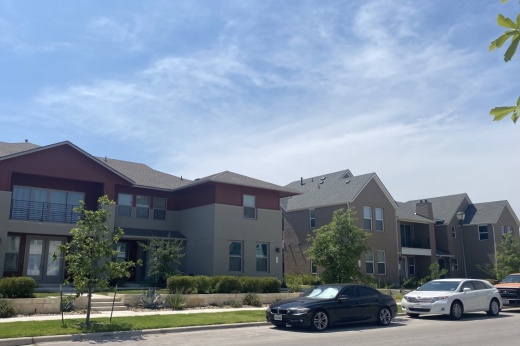In a breakdown of affordable housing in Austin by City Council district, Austin nonprofit HousingWorks found that few affordable housing options existed for residents on the west side of the city, with the majority of units clustered in East and South Austin. Lower-income districts 1, 2 and 3 encompassed 58% of available subsidized housing, while districts 6, 8 and 10—with some of the highest housing prices and rents—contained less than 6%.
“The high cost of housing and short supply of affordable housing in certain parts of the city make it very difficult for many households to have the ability to choose to live in all parts of Austin,” said Nora Linares-Moeller, HousingWorks Austin executive director, in a press release. “As Austin continues to experience unprecedented housing prices, the continued growth of affordable housing options across the city for low- and moderate-income families has become a priority.”
In 2017, the Austin City Council adopted a 10-year plan to build 60,000 subsidized housing units for individuals falling below 80% of the median family income. Since then, however, the city has struggled to keep up with that plan, at only 12% of its goal in 2020.
HousingWorks counted 46,630 affordable housing units in the city in 2021, but only 26,122 that currently exist. Unlike previous reports, the 2021 report included 20,508 planned subsidized units in its total count. East Austin District 1 had the most affordable housing of any district, with 10,730 established and planned units. Still, almost half of renters were cost-burdened, putting over 30% of their income toward housing.
“While I am proud that [District] 1 leads the city in income-restricted units, we need to be mindful that concentrating all of our lower-income housing in the Eastern Crescent echoes the decades of deliberately discriminatory polices that created the extreme racial and economic segregation we have today,” said Natasha Harper-Madison, District 1 Austin City Council member. “The fact is, we need more housing for more people in more parts of town.”
Southeast District 2 had the most units planned for development at almost 5,000, with 2,744 existing. This district also had the lowest median home price at $412,810 but the most cost-burdened homeowners.
West Austin District 10, one of the city’s more expensive districts, had the largest increase in its subsidized housing units at 47%; however, those units still make up only 2% of the city’s overall affordable units.
The study also affirmed that housing costs are continuing to rapidly increase in Austin. From 2020 to 2021, the average monthly rent rose by 27% to $1,658, and the median home price rose by 26% to $536,311. Meanwhile, the median family income rose by only 12%.
Housing prices rose the most in Southwest District 8. The median home price rose by $203,000 and the average rent by $413. The district also had the lowest number of affordable housing units.
“Bringing affordable housing to areas of high land costs and limited development options is a challenge due to cost barriers,” District 8 City Council Member Paige Ellis said. “However, these units are still needed, and I am committed to helping facilitate this development, whether it comes from the public or private sector, or a mixture of both.”
Costs also rose significantly in Central East Austin District 3, with a 40% increase in home prices and a 28% increase in rent. District 3 has the second-most affordable housing units of any other district.
With Project Connect underway, the study also looked at what percentage of affordable housing was within a 5-minute walk of high frequency transit.
“We have to invest our Project Connect antidisplacement dollars wisely so that people who depend on transit will still be able to use it,” Harper-Madison said.
Central Austin District 9 had the most expensive average rent at $2,059, but it had the most accessible public transit. Of its 4,262 planned and existing units, 73% were within a five-minute walk of transportation.
District 6 had no public transit within a five-minute walk of its 1,250 units. It also had the smallest number of residents living below the poverty line.
As the Ending Community Homelessness Coalition, or ECHO, could not conduct its annual homelessness count, HousingWorks worked with the agency to create an alternative count for the report that addresses where residents were losing their housing.
Districts 3 and 4 had the largest homeless populations at 20% and 19%, while Districts 6,8 and 10 each had the smallest populations at 2%.





